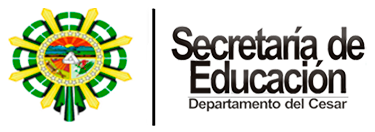Reading tarot cards is an ancient method that dates back centuries. The tarot card deck is a device utilized for prophecy, offering insight into the past, existing, and future. While some might think that only psychics or seasoned visitors can translate the cards, anybody can learn how to read tarot card cards with method and dedication.
Here are some tips and guidelines on exactly how to review tarot cards:
Recognizing the Tarot Deck
Before diving into checking out tarot cards, it’s important to understand the structure of the tarot deck. A typical tarot deck consists of 78 cards, separated into 2 primary areas: the Major Arcana and the Minor Arcana.
The Major Arcana contains 22 cards that represent major life events and themes. Each card in the Major Arcana has its own one-of-a-kind importance and significance, influencing the total reading.
The Minor Arcana consists of 56 cards split into four matches: Wands, Cups, Swords, and Pentacles. Each suit stands for a different facet of life, such as emotions (Mugs) or product riches (Pentacles).
- Wands: Represents activity, imagination, and passion.
- Mugs: Represents feelings, relationships, and intuition.
- Swords: Stands for challenges, disputes, and intellect.
- Pentacles: Represents worldly wealth, health, and sensible matters.
Setting the Purpose
Prior to beginning a tarot analysis, it’s important to set your purpose. Take a moment to concentrate on the question or problem you desire advice on. Clear your mind and focus on your purpose, kasamba review permitting the power to move with the cards.
Some viewers choose to clean their tarot deck before a reading by smearing it with sage or setting it under moonlight. This ritual assists remove any remaining energy from previous readings and guarantees a clear connection with the cards.
Shuffling and Drawing Cards
Once you’ve established your purpose, shuffle the tarot deck while focusing on your inquiry. There are numerous methods to shuffle the cards, from standard tarot price hand evasion to the much more contemporary “overhand” or “riffle” shuffle.
When you feel prepared, attract the variety of cards required for your spread. Typical tarot spreads consist of the three-card spread, the Celtic Cross, and the 10-card spread. Each spread provides a various point of view on the inquiry handy, offering understanding into previous influences, present difficulties, and future outcomes.
Translating the Cards
Interpreting tarot cards requires a mix of instinct, understanding of the card meanings, and understanding of the card’s position in the spread. Take your time to research each card, taking note of the imagery, significance, and shades.
Take into consideration just how the card’s meaning associates with your inquiry and its position in the spread. For instance, a reversed card might suggest blockages or obstacles, while a card surrounded by positive cards might suggest a positive outcome.
- Count on your instinct: Don’t hesitate to trust your suspicion when translating the cards. Your instinct can frequently give useful understandings that go beyond the typical meanings of the cards.
- Maintain a tarot journal: To track your development and grow your understanding of the cards, think about maintaining a tarot card journal. Videotape your readings, understandings, and any type of patterns or synchronicities that arise.
- Technique frequently: Like any skill, reviewing tarot card cards needs technique. Set aside time every day to practice reading the cards, whether on your own or others. The more you technique, the more certain and proficient you will come to be.
Verdict
Understanding how to read tarot card cards can be a fulfilling and informing experience. By understanding the structure of the tarot card deck, setting your purpose, shuffling and attracting cards, and translating the cards with intuition and knowledge, you can unlock the knowledge and support that the tarot card has to offer.
